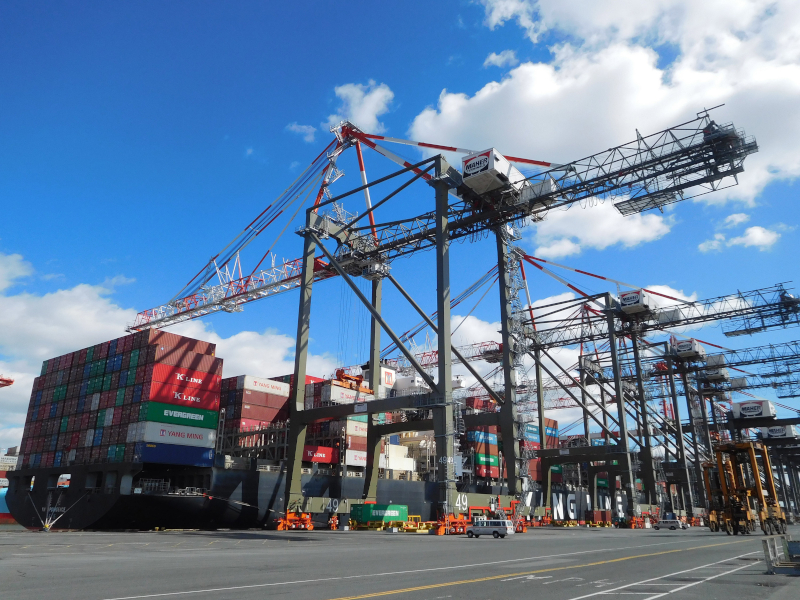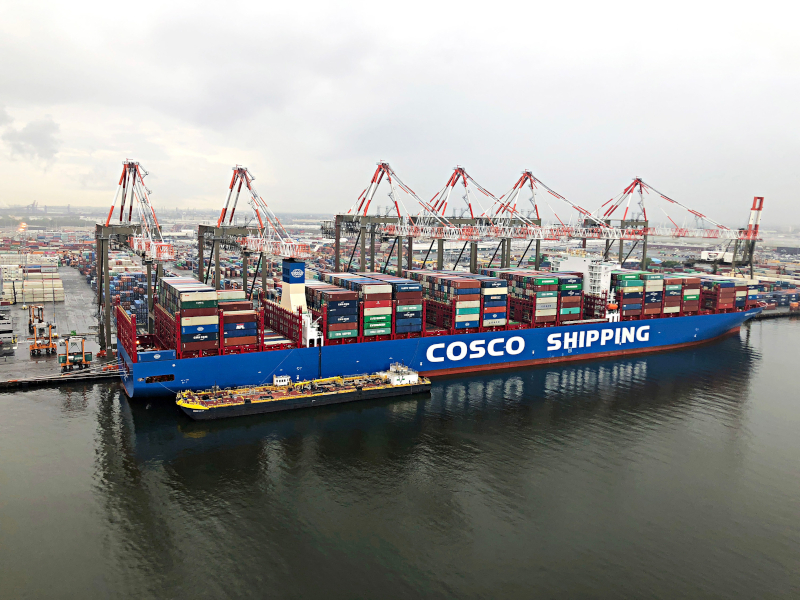Liebherr Container Cranes to supply 3 STS container cranes to Maher Terminals
7 October 2021Liebherr Container Cranes has won a contract to supply three ship to shore (STS) container cranes to Maher Terminals at the Port of New York & New Jersey.
The cranes will join eight existing Liebherr STS cranes at the terminal. The first two cranes were supplied in 2012 with a further two in 2014 and four in 2016. Maher’s positive experience with Liebherr led to the decision to once again purchase Liebherr cranes.
With a span of 30.48 m, a back reach of 22.9 m, an outreach of 69.5 m and a lift height over rail of 53.34 m, the megamax cranes are designed to handle the world’s largest container vessels.
“We are delighted, with this latest order to be able to continue our longstanding relationship with Maher Terminals. With these latest technically advanced machines working alongside the other Liebherr STS cranes at the Port, we are confident Maher Terminals will be able to offer improved services and faster turnarounds to their customers and continue to grow as North America’s largest marine container terminal,” said Gerry Bunyan, MD, sales, Liebher.
Maher is a champion of Sustainable Port Infrastructure and the Liebherr STS cranes are a key component of Maher’s comprehensive energy and environmental management programme. The cranes will assist Maher in becoming a Net Zero emissions facility by 2040 and Liebherr is proud to play its part in this initiative.
The STS cranes include many additional environmental benefits. Manufactured using high tensile steel and with a lattice main beam and boom, the resulting lightweight and stiff crane requires less energy to operate than traditional cranes.
The crane drives include an active front end, which returns electricity to the grid, whilst the Liebherr Liduro drive systems optimises energy requirements, and power management. Ultra-high efficiency LED flood lights reduce energy consumption by 70% over traditional fixtures, provide better light quality to the longshoremen, and are designed to reduce glare and light pollution.

